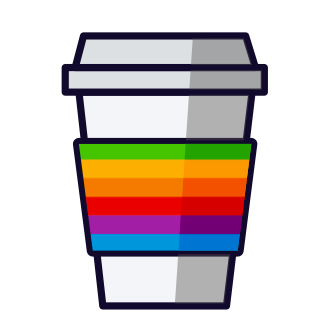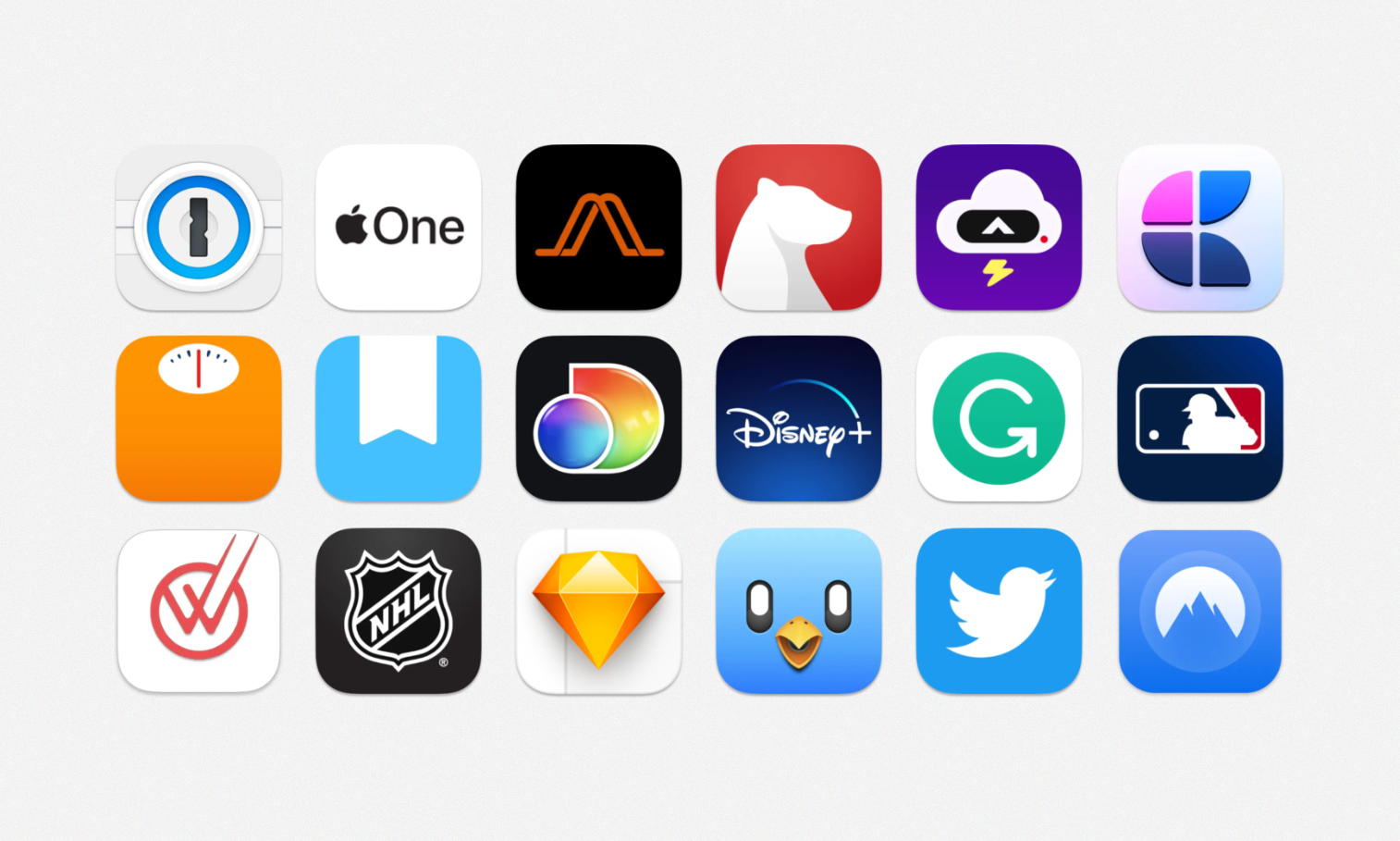$9.99/Month
With subscriptions now the norm of the app world, I wanted to take a closer look & see how those little monthly micro-transactions added up.
When I wanted to convince myself to stop buying coffee at University and brew my own at home, I calculated the time it would take me to complete my degree and multiplied it by the number of coffees I bought each semester.
At $3/coffee (black, nothing fancy) purchased on average four times per week across 4.5 years of school, the total came to roughly $1,700. And when I crunched the numbers I'd spend on meals; it came to over $2,500. Both were very conservative estimates, but they changed my habits dramatically when I saw the potential of saving a sizable portion of the 4-grand if I chose to eat out less on campus. That slow drip spent on coffees and meals significantly adds up across days, weeks, and months.
Invisible Drip
I recently applied the same principle to my subscriptions. Over the past several years, as more and more apps have moved from standalone releases to yearly subscription pricing, the drip of yearly costs continues to accrue. What I find difficult about subscription pricing is that I very quickly habituate to it, the monthly fees becoming just another expense in the litany of other costs that are part of adulting. They become invisible.
So this isn't a repudiation of subscription models; more an experiment to 1) become more aware of what I was spending and 2) assess whether I was happy with the value I was getting from these apps. Do you know how much you spend across all your monthly subscriptions?
The first step was to go into Settings and calculate the subscriptions listed there, including many of my streaming, note-taking, and productivity apps. Then I tracked down subscriptions I bought outside the App Store, including for apps like Sketch, MLB, and NordVPN.
Categories
I currently divide my subscriptions into three categories. The first are apps that, if I stopped paying for them, I would 1) lose access to (e.g. Disney+, Audm, etc.), or 2) would severely curtail their functionality (e.g. Day One, Grammarly). The second category is apps that I purchased outright and have a hybrid approach where they receive updates for a while (e.g. one year) after purchase. For these apps, receiving new updates and features requires purchasing another year of updates, but most existing features prior to that date remain fully functional. Apps like Agenda, Nova, & CleanShot X follow this model. And finally, the third category is subscription applications I purchased a lifetime license for. This tier is often 2-5x the cost of an annual subscription, but it gives me access to the app and all its features for as long as it is supported. Apps like Calm, Flighty, & Darkroom offer this option in addition to monthly/yearly pricing.
Category 1: Pure Subscription Apps
Pure subscription apps require a monthly payment to access or limit the functionality in any free tier offering they provide.
These are all the current subscriptions I am subscribed to as of July 01, 2022:
1Password (Family): $59/year
Apple One Premier: $408/year
Includes: Fitness+, 2TB iCloud, News+, AppleTV, Apple Music, & Apple Arcade
Audm: $79/year
Bear: $20/year
CARROT Weather: $40/year
Craft: $60/year
Day One: $32/year
discovery+: $84/year
Disney+: $144/year
Grammarly: $150/year
Lost It!: $28/year
MLB: $75/year
Half season ($183/season)
MoneyWiz: $25/year
NHL Live: $180/season
Sketch: $134/year
Tweetbot: $8/year
Twitter: $36/year
NordVPN: $45/year
The findings shook me. My current subscription tally came to $1,500 ($1,520 to be exact) per year, or $126/month! And not to absolve me, but I didn't think my list was particularly egregious. There's Apple One, a markdown app, a weather app, a few streaming services, a VPN, a password manager, and a few more, but the costs, that slow drip, very quickly added up.
Discontinued Subscriptions
There are also several previous subscriptions I've recently allowed to lapse because I found alternatives, no longer needed the app or felt the value versus cost wasn't there. Some of these apps include:
Deliveries: $7/year
Netflix: $192/year
NY Times Crossword: $54/year
The Weather Network: $4/year
Lake: $15/year
Habitica: $63/year
Ulysses: $67/year
Category 2: Hybrid Model Apps
Hybrid apps offer users the whole app at the time of purchase and require a license renewal to continue receiving new updates.
These are apps are purchased outright but often come with a year of updates. After the year expires, you retain access to the app's full functionality but won't receive any future features until you renew your license. My current apps that follow this model include:
Squash 3: $5.00/year (otherwise $41/year)
Purchased as part of a BundleHunt special
RapidWeaver Classic: $52/year (otherwise $66/year)
Upgrade pricing
Agenda: $11/year (otherwise $48/year)
Special on StackSocial
Nova: $49/year (otherwise $128/year)
Special 1/2 off March sale
CleanShot X: $49/year (2 Macs)
This is my preferred subscription model because it 1) gives me a sense of ownership over the application and 2) provides the developer with a regular revenue stream. But as opposed to losing functionality if your subscription lapses, like the Category 1 applications, Hybrid apps keep nearly all their functionality after your subscription end. Resubscribing then becomes a decision based on me feeling like the developer has continued to provide compelling features for their application, rather than maintaining a subscription for fear of losing functionality or to avoid the hassle of migrating my data out of the application.
Category 3: Lifetime Purchases
At 2-5x the cost of an annual subscription, Lifetime access gives users access to the app for as long as it is supported.
These apps are often available as a yearly subscription but offer a lifetime (i.e. buy once, own all future updates) price, often 2-5x the cost of an annual subscription. You pay a lot more upfront, but you stand to save the longer you use the app. The ROI figure refers to the years you would need to use the app for the lifetime price to equal the yearly subscription cost. My current lifetime apps are:
1Blocker: $20/year
Purchased for $54 in 2020 (ROI: 2.7 years)
Calm: $77/year
Purchased for $199 in 2020 (currently $499; ROI: 2.5 years)
CleanMyMac X: $79/year (2 Macs)
Purchased for $75 (normally $236) in 2020 (ROI: 0.9 years)
Endel: $70/year
Purchased for $90 in 2020 (currently $349; ROI: 1.25 years)
Darkroom: $39/year
Purchased for $105 in 2020 (ROI: 2.7 years)
Flighty: $66/year
Purchased for $349 in 2020 (ROI: 5.25 years)
Halide: $15/year
Purchased for $30 in 2020 (ROI: 2.0 years)
Linea Sketch: $14/year
Purchased for $40 in 2020 (ROI: 2.9 years)
Microsoft Office: $79/year
Purchased for $169 in 2021 (ROI: 2.1 years)
Twitterrific: $14/year
Purchased for $40 in 2019 (ROI: 2.9 years)
I have hit or am close to hitting the ROI cost for most applications in this camp (including Halide, Darkroom, Endel). All of these applications continue to be used regularly, both because I enjoy them and because I paid a buttload of money for them and want to maximize their value.
Results
The entire purpose of this exercise was to bring more awareness to the dozens of slowly accruing subscriptions I've accumulated over the years. And seeing the number recontextualized from "a few $9.99/month subscriptions" to $1,520/year creates enough discomfort to prompt change. If I felt happy with everything these apps provided, the value would complement the cost, and the pain would be minimal. But when I looked at my list of apps, particularly the pure subscription apps, there was a number where it quickly became apparent that their value to me just isn’t there at this time.
Changes Made
Immediately I cancelled my Audm ($79/year), Bear ($20/year), & Grammarly ($150/year) subscriptions. Cancelling those three alone represented a 16% drop in my annual spending on Category 1 (Pure Subscription) applications. They are not bad apps, just not right for me now.
My next step is looking at the other subscriptions I may want to cancel. These include services like Craft ($60/year), Disney+ ($144/year), discovery+ ($84/year), and Twitter ($36/year). Cancelling all or a portion of these has the potential to save up to $324/year, potentially shaving my subscriptions down to $950/year, or 62% of my current amount.
In Sum
It's hard to say if I spend more on software today (via the various subscription models) than I did in the past, but I can certainly say that today I am far less aware of my spending. In the old days, software was a commitment, a large lump sum guaranteeing 2, 3, 4, or even five years of updates before another version came out. Now that lot of software has become inconspicuous subscription-based microtransactions, the weight of each decision is lessened. It's just $3.99 here, $1.39 there, but it quickly, and in my case, dramatically adds up.
Look at your subscriptions - the streaming services, podcasts, and apps you pay for. If they bring you value, keep 'em! But if you begin to find their cost is starting to outweigh their current utility for you, this method can help you reprioritize which services to keep and which to uninstall.




